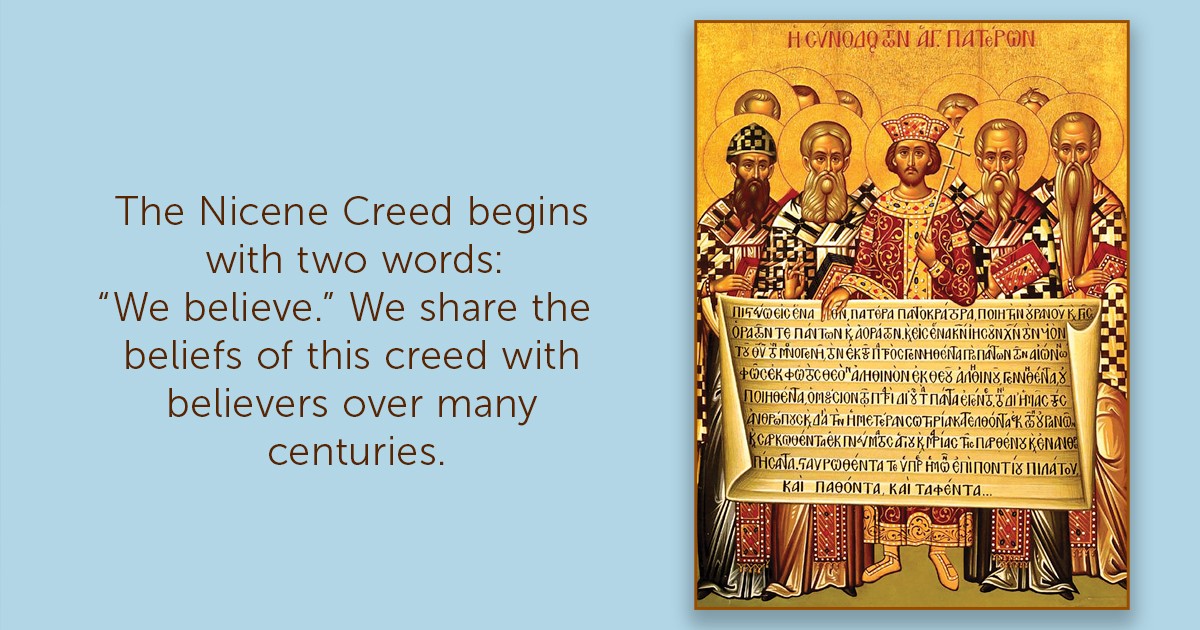This year marks an important anniversary in the life of the church: the formulation of the Nicene Creed, which took place 1,700 years ago in 325. While this confession of Christian faith may not be well known to the Salvationist community, it can be found in our Handbook of Doctrine and will be celebrated in many parts of the church for important reasons. Over the course of this year, Dr. James Read and I will explore the Nicene Creed’s story and its importance for our faith today in the print editions of Salvationist.
The word “creed” comes from the Latin word credo, which means “I believe.” The Nicene Creed affirms those beliefs that are at the core of Christian faith. How it came to be called the Nicene Creed, however, involves a little history.
Ruled Faith
When Constantine became emperor of the Roman Empire, he wanted to create a stronger sense of unity and thought the emerging church could help. So, in the year 325 he summoned the church’s bishops to the picturesque town of Nicea, on the northwest coast of modern Turkey. Constantine sat on his throne and addressed the bishops: “Friends, I need you to help glue this empire together!” They didn’t have much choice. But before the bishops could help the emperor, they needed to bring a greater sense of convictional unity to the church itself.
The task of expressing faith convictions concisely is evident in the Bible itself. The Book of Deuteronomy voices Israel’s confession of faith: “Hear O Israel, the Lord our God is one Lord” (Deuteronomy 6:4 RSV). The early church held this same conviction while introducing new convictions of faith. When Thomas finally sees the risen Christ, with the marks of crucifixion, he responds: “My Lord and my God!” (John 20:28). While retaining its conviction that “the Lord our God is one Lord,” the early church proclaimed its understanding of God through the story of Jesus and the Holy Spirit. Thus the church both affirmed its Jewish roots and distinguished itself from them.
However, it didn’t take long before different understandings of Christian faith created tensions within the church itself. One early tension came through a teacher named Marcion in the second century. Marcion wanted nothing to do with the God of Judaism. He argued for a faith stripped of its Jewishness. Church leaders recognized the dangers in this and began creating summaries of faith called “ruled faith.” Like the rules that distinguish hockey from baseball, ruled faith helped to define and shape the life of the early church. As the bishops gathered in 325, they sought to create a ruled faith to help unify the church. The result is a confession of faith that came to be called the Nicene Creed.
Communal Convictions
Notice that the Nicene Creed begins with two words: “We believe.” These are communal convictions. We share the beliefs of this creed with believers over many centuries, and we share them in our day with Christians from many different cultures. In a highly individualistic culture such as ours, this is most significant.
Beliefs are strong convictions, shaped by many questions and conversations. Beliefs also shape our practice of faith. Because we believe that every person bears the image of God, we seek to care for all people. Because we believe God will ultimately realize his purposes in the future, we practise hope. But what do we believe that leads us to live sacrificially for the sake of the greater good? What convictions guide us as we seek to be a reconciling influence in the polarizations of our world? It is from the core convictions of the Nicene Creed that we begin this task of engaging our faith with the issues of our day.
As Dr. Read and I unpack some of the phrases in this Nicene Creed it is our hope to contribute to a greater sense of unity within the Christian church, and to our Salvationist mission in God’s world. Thus we pray that “the grace of the Lord Jesus Christ, and the love of God, and the fellowship of the Holy Spirit be with you all” (2 Corinthians 13:14). Amen!
MAJOR RAY HARRIS is a retired Salvation Army officer and author of Convictions Matter. Dr. James Read, OF, was the executive director of The Salvation Army Ethics Centre for many years and was a member of the International Theological Council. Major Harris and Dr. Read attend Heritage Park Temple in Winnipeg.
This article is the first in a six-part series on the Nicene Creed, which marks its 1,700th anniversary in 2025.
Image source: Wikimedia Commons
This story is from:










Great to read articles from Dr. Read and Major Ray Harris. Always to hear the history the word and the truth